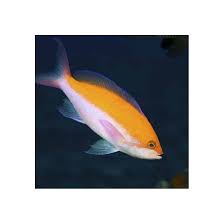The Symbolism of Dragons in Mural Paintings in Ancient Tombs

In the ancient world, art was not only a means of expression but also an essential medium for conveying cultural beliefs, spiritual values, and social structures. One of the most fascinating elements of ancient artwork, particularly in mural paintings found in tombs, is the depiction of dragons. These mythical creatures have appeared in various cultures throughout history, often representing power, strength, and mysticism. In ancient tombs, the image of the dragon holds a significant place, serving as a symbol of protection, immortality, and divine intervention. This article will explore the symbolism and significance of dragons in ancient tomb mural paintings, examining their origins, meanings, and the cultural contexts in which they were created.
The Dragon in Ancient Mythology
The concept of the dragon is found across many ancient cultures, though its form and symbolism may vary. In Chinese mythology, dragons are often seen as benevolent creatures associated with the emperor, prosperity, and the natural elements. They symbolize cosmic harmony, power, and the balance of nature. On the other hand, in Western traditions, dragons are typically portrayed as dangerous beasts to be slain by heroes, symbolizing chaos or evil that must be overcome.
In the context of ancient tombs, however, the dragon often takes on a more spiritual role. Its depiction on tomb murals is generally not one of threat or destruction but one of protection and guardianship. The dragon, in these settings, serves as a powerful symbol guiding the deceased through the afterlife, ensuring that they are safe from malevolent forces and that they are blessed with eternal life.
Dragons in Chinese Tomb Murals
One of the most prominent places where dragons feature in tomb murals is ancient China. In Chinese tombs, especially those from the Tang, Han, and Ming dynasties, murals often include elaborate depictions of dragons. These dragons were painted with great detail, swirling around clouds or coiled around pillars and other symbolic elements. The dragon in Chinese tombs is typically associated with the imperial family, reflecting its status as a symbol of the emperor’s divine right to rule.
In the Han dynasty, the dragon symbolized power and authority, often appearing in the tombs of high-ranking officials. Murals of dragons in these tombs were believed to serve as protectors of the deceased, ensuring that the spirit would be safeguarded during its journey to the afterlife. These dragons were also believed to have the ability to control natural elements, bringing harmony and balance to the tomb and its surroundings.
During the Tang dynasty, dragon imagery became even more elaborate. The dragon’s form was often more dynamic, with swirling designs and intricate patterns that conveyed movement and energy. This period saw a shift in the depiction of the dragon from a more rigid, traditional form to a more fluid and expressive design, reflecting the flourishing of arts and culture during the Tang period. The dragons in these tomb murals were often depicted flying through the heavens, signifying the emperor’s connection to the celestial realm and his ability to maintain cosmic order.
In the Ming dynasty, dragons continued to be an essential symbol in tomb art, but they were now more stylized, often blending with other motifs such as phoenixes and clouds. The dragon in this period represented not only the emperor’s power but also the hope for eternal life and prosperity for the deceased. The murals in these tombs were designed to guide the deceased toward immortality, with the dragon acting as a protector and guardian in the afterlife.
Dragons in Egyptian Tomb Paintings
In ancient Egypt, dragons did not feature in the same way they did in China, but certain serpentine creatures, which may be loosely referred to as dragons, were depicted in tombs. The Egyptian culture often used serpents and dragon-like figures to represent chaos and the forces of destruction. However, in the context of the afterlife, these creatures could also symbolize rebirth, renewal, and the triumph over evil.
In the tombs of pharaohs, depictions of serpents and winged creatures were often associated with the protective deities and the journey of the deceased into the underworld. These creatures, often portrayed in a protective and spiritual context, mirrored the protective qualities seen in the Chinese dragon. They were believed to ward off evil spirits and ensure a safe passage into the afterlife, much like dragons in other cultures.
The Role of Dragons in Roman and Greek Tomb Murals
Dragons also appear in the funerary art of ancient Greece and Rome, though not as prominently as in Chinese or Egyptian tombs. In these cultures, dragons were typically seen as representations of the dangers of the underworld or the challenges faced by the deceased in their journey to the afterlife. Roman tomb murals sometimes depicted dragons as guardians of sacred spaces or symbols of victory over death. These murals were meant to convey the notion of overcoming obstacles and emerging victorious, ensuring that the deceased would find peace and safety in the afterlife.
In Greek mythology, dragons were often seen as protectors of sacred sites. The most famous example is the dragon guarding the golden fleece, a symbol of ultimate power and wealth. Similarly, in Greek tombs, dragons may have symbolized the protective guardianship that the deceased would need in the afterlife. This use of dragons in Roman and Greek funerary art was more about the balance between life and death, portraying the deceased as needing protection from the dangers of the underworld.
The Iconography and Symbolism of Dragons in Tomb Murals
The iconography of dragons in ancient tomb murals varies widely, but common themes can be identified. The dragon is often portrayed as a majestic and powerful creature, sometimes coiled around trees, pillars, or other symbols of life and nature. It may be depicted flying among clouds or coiling through waves, emphasizing its celestial or elemental power. Its scales are often intricately detailed, reflecting its strength and vitality.
In many cultures, the dragon is associated with both masculinity and femininity. In China, for example, the dragon is often paired with the phoenix, a symbol of the empress and the feminine principle. The pairing of the dragon and phoenix in tomb murals symbolizes the balance of yin and yang, the harmonious interaction between male and female energies. This balance is crucial for the afterlife, as it ensures the stability and prosperity of the deceased in the spiritual realm.
Dragons in ancient tombs are also commonly depicted with flowing manes or sharp claws, emphasizing their supernatural abilities. These creatures are not just symbolic of power but also of mystery and the unknown. Their ability to control the natural elements, such as water and fire, and their connection to the divine or celestial realms make them a fitting protector for the deceased, who was believed to require assistance in navigating the perilous journey to the afterlife.
The Legacy of Dragon Imagery in Modern Tomb Art
The image of the dragon continues to influence modern tomb art and funerary practices in many parts of the world. In some contemporary cultures, dragons remain a symbol of power and protection, and their depiction in tomb murals serves as a link to ancient beliefs and traditions. While the form of the dragon may have evolved over time, its symbolism as a guardian of the dead and a guide to the afterlife has remained constant.
In the modern world, dragon motifs can be seen in the art of tombs and memorials, especially in Asia. The dragon continues to be associated with strength, protection, and immortality, and its presence in tomb murals serves as a reminder of the enduring cultural and spiritual significance of this mythical creature. The legacy of dragon imagery in ancient tomb art reflects the universal human desire for protection, guidance, and immortality, themes that continue to resonate today.
Conclusion
The symbolism of dragons in mural paintings within ancient tombs reflects a rich tapestry of cultural beliefs and artistic traditions. Whether in the context of Chinese imperial tombs, Egyptian burial rituals, or Roman funerary art, dragons have consistently symbolized power, protection, and the hope for eternal life. These mythical creatures, depicted in intricate and dynamic forms, continue to captivate us today, serving as reminders of the spiritual beliefs and values that shaped ancient societies. Through their depiction in tomb art, dragons serve not only as protectors of the deceased but also as enduring symbols of the mysteries of life and death.

